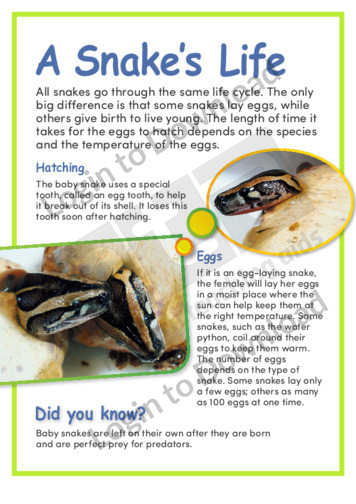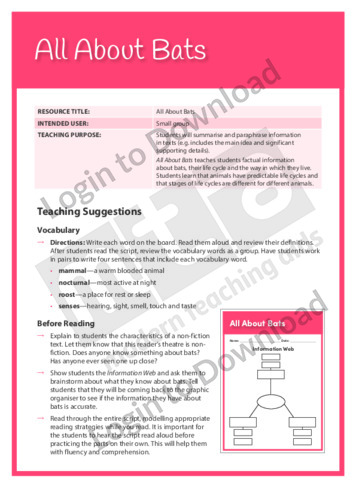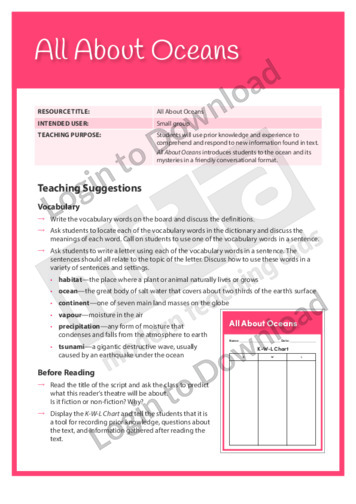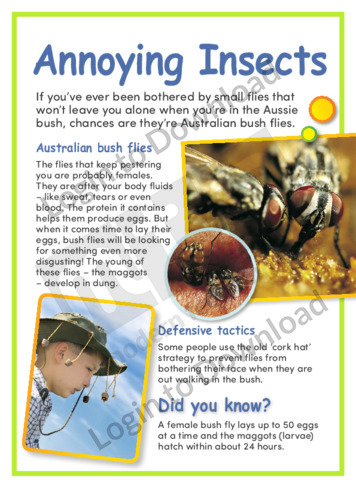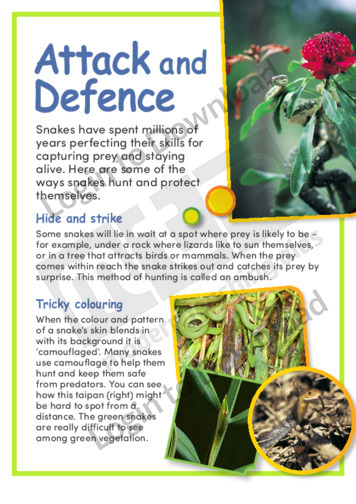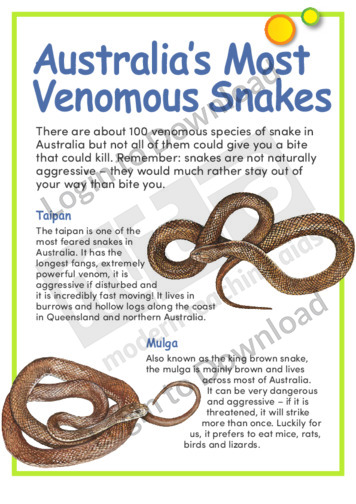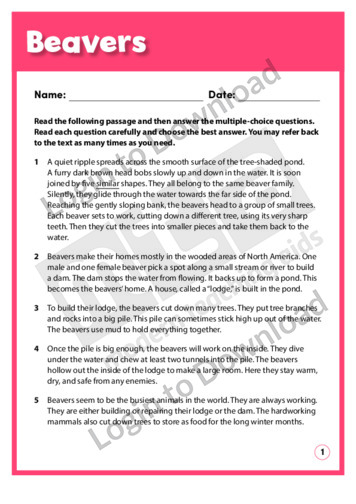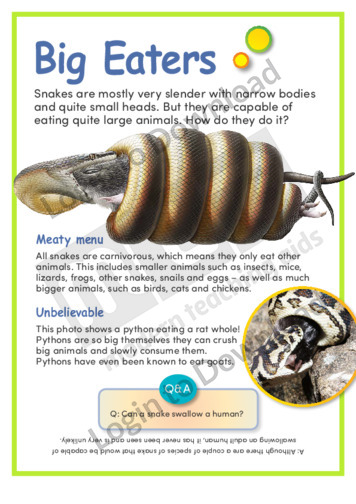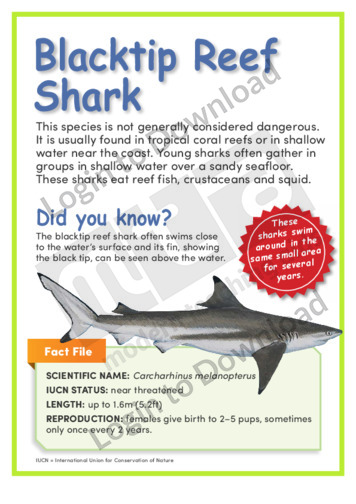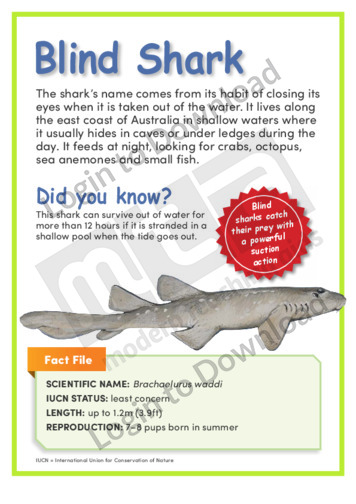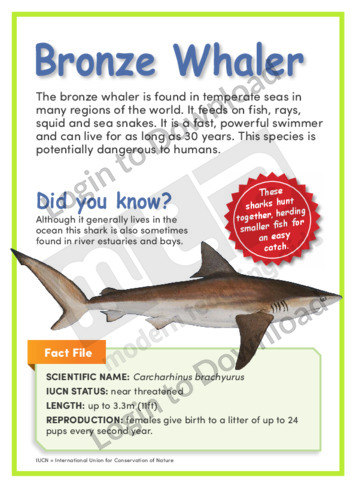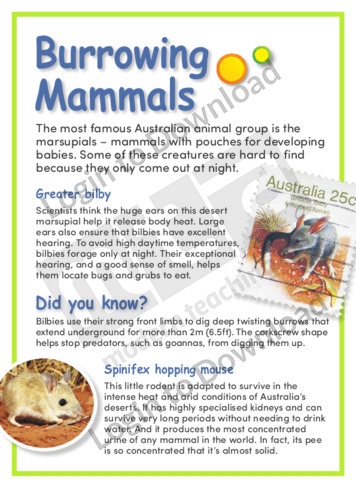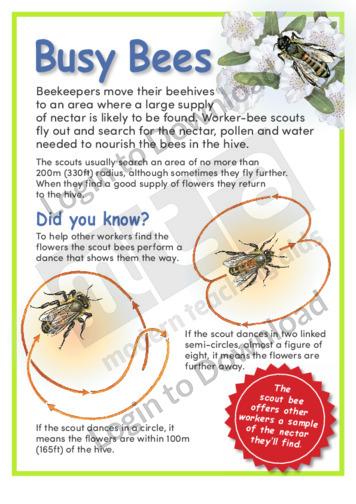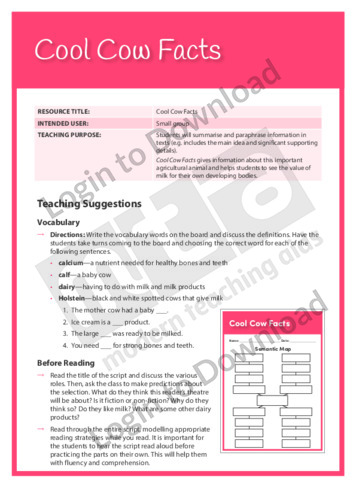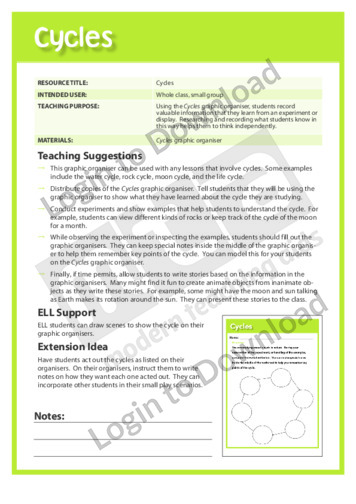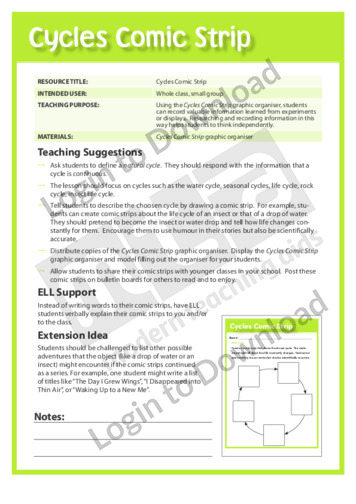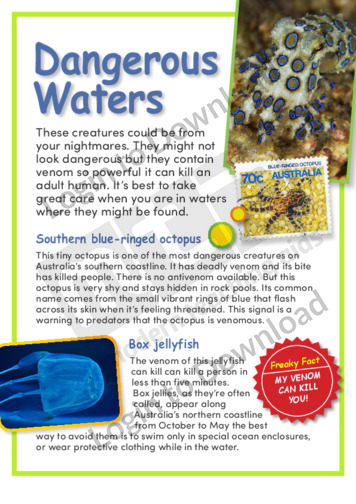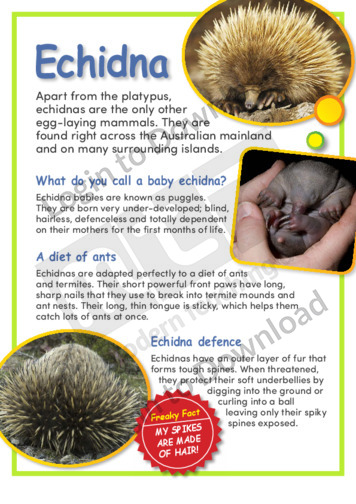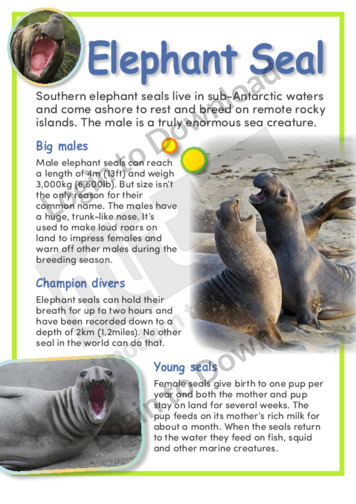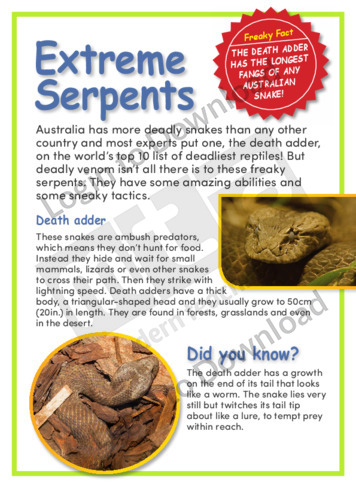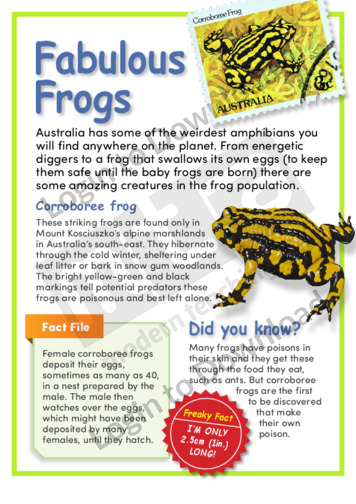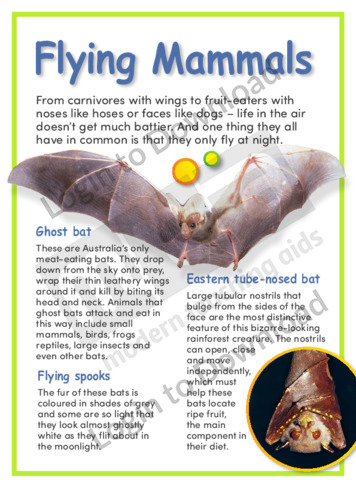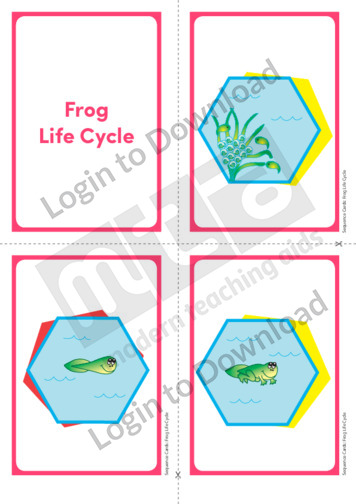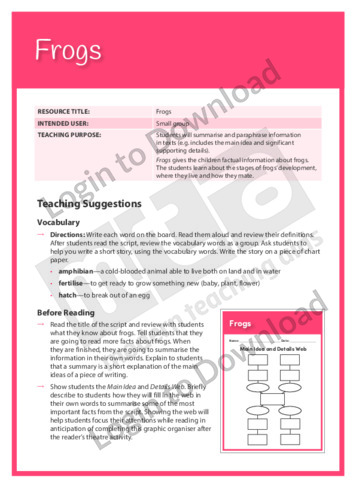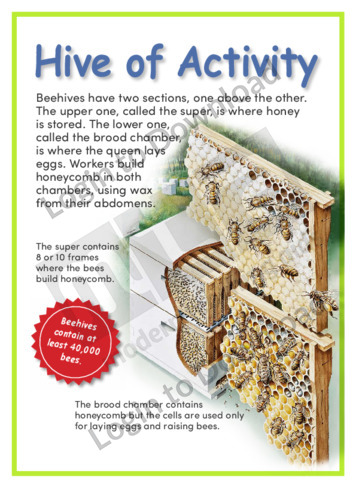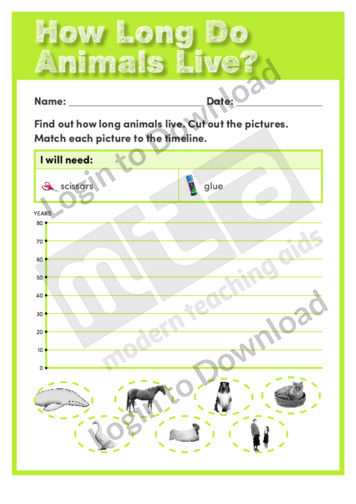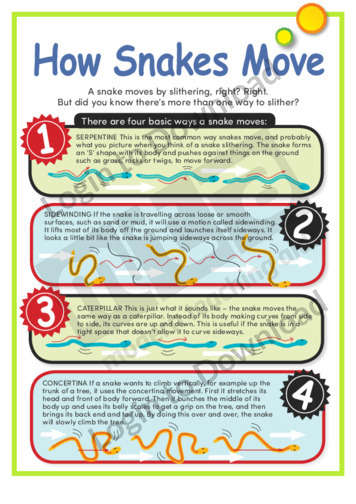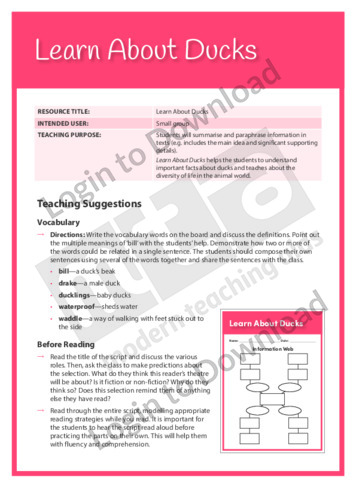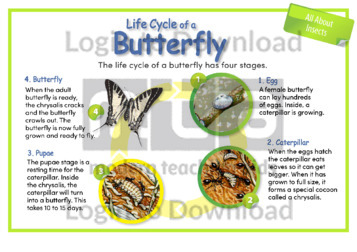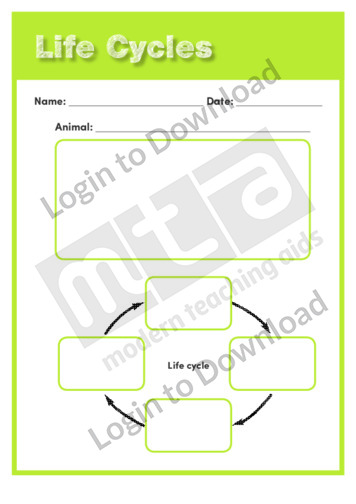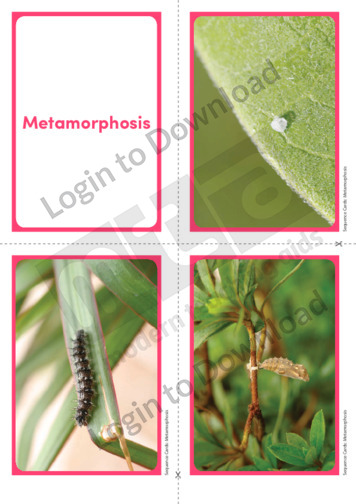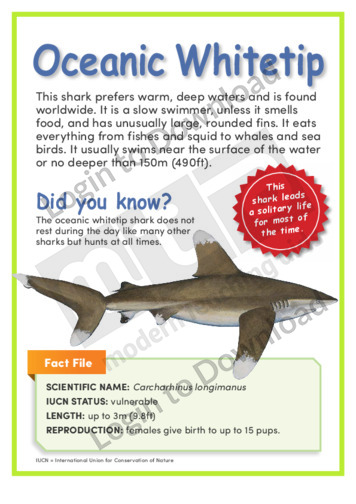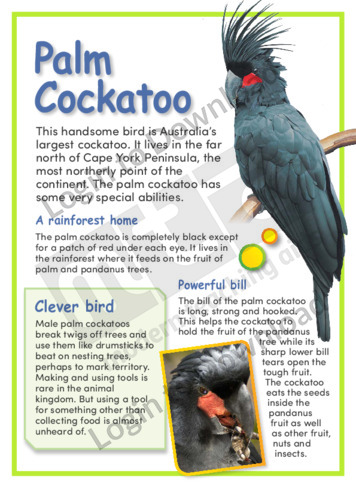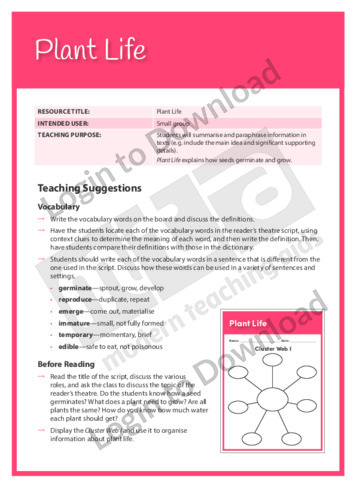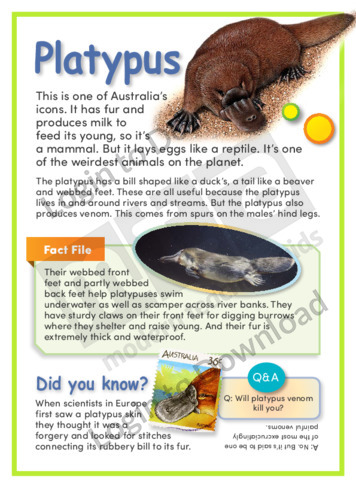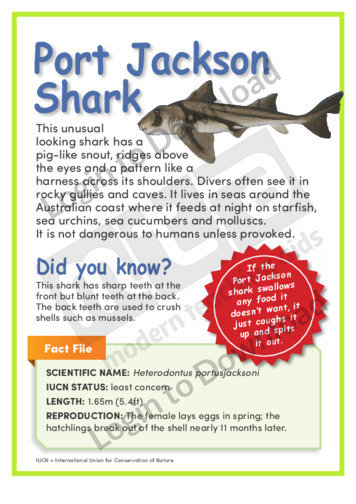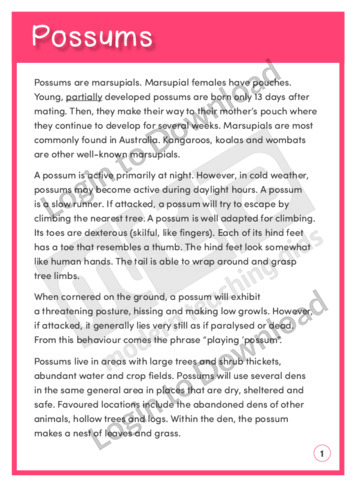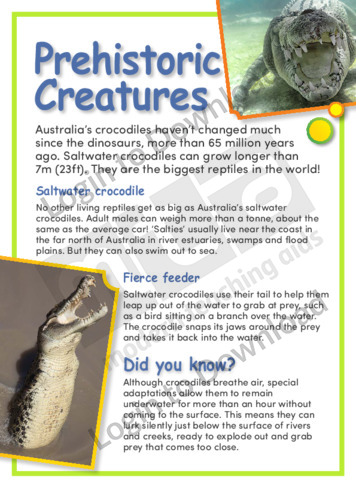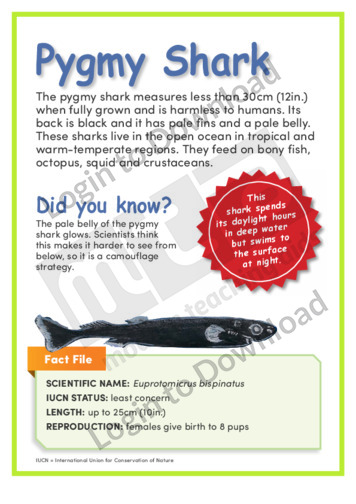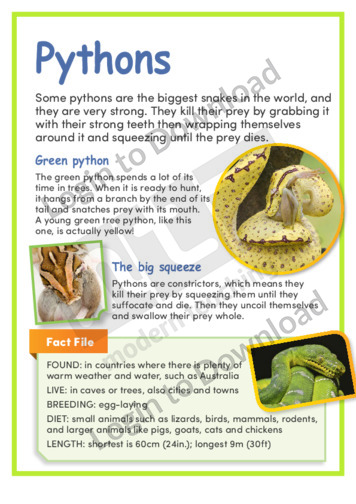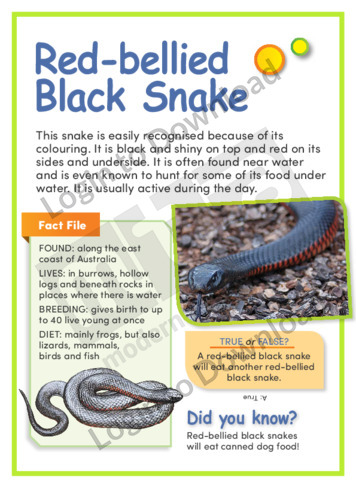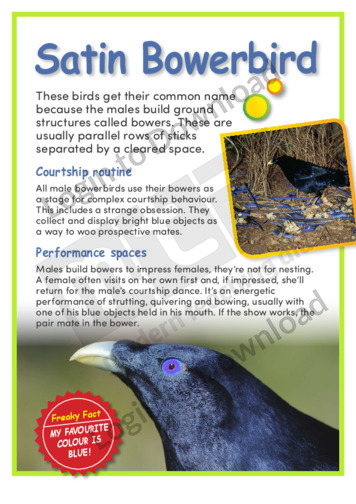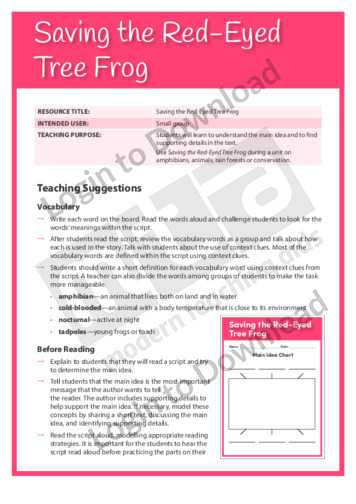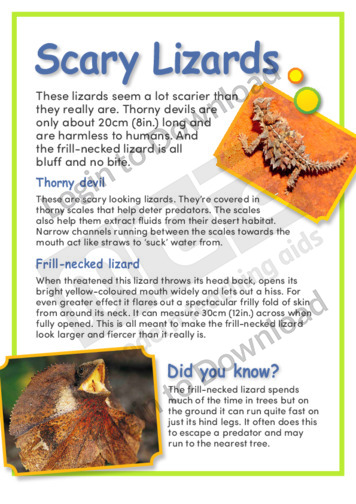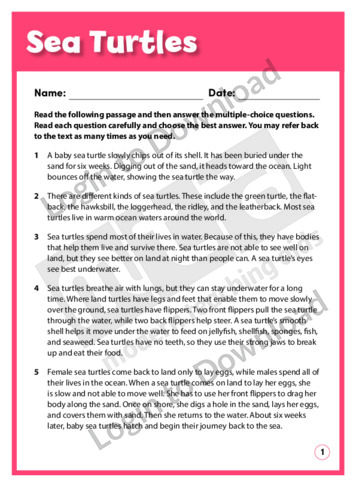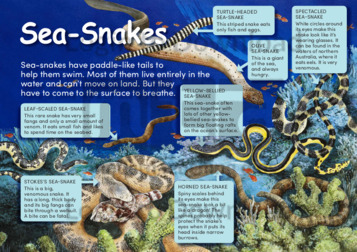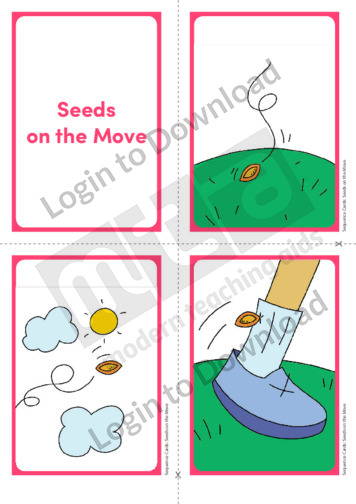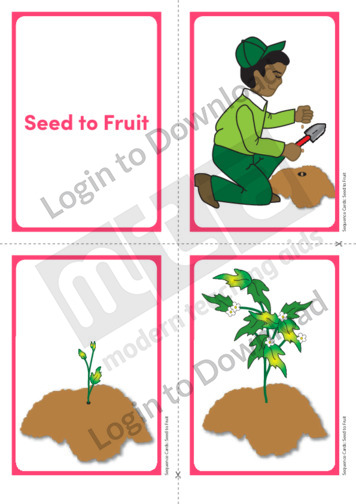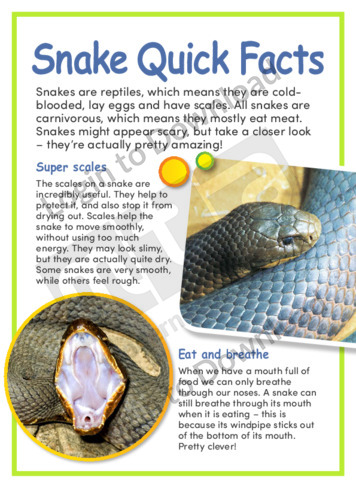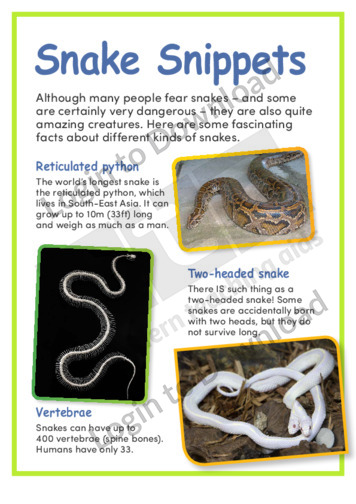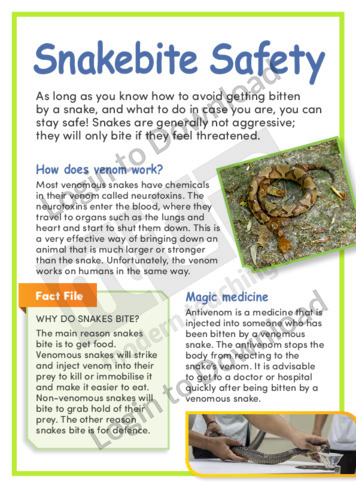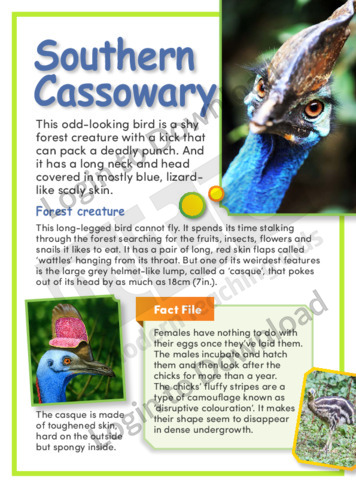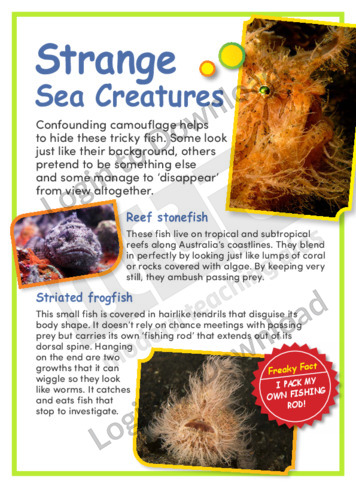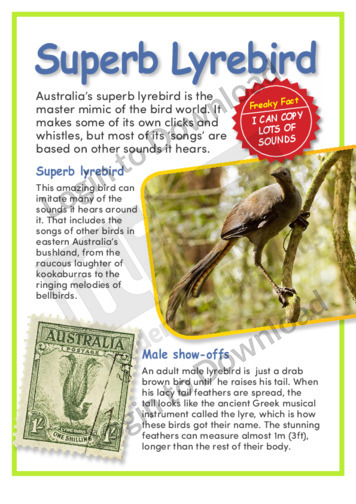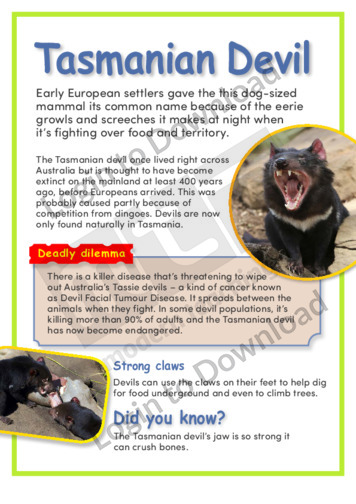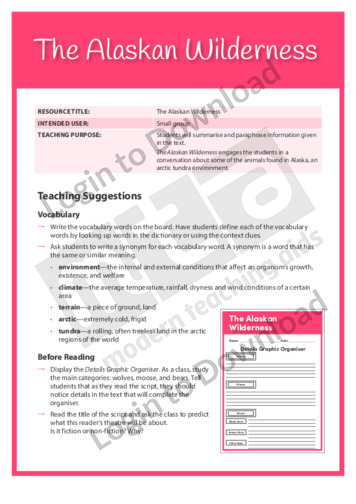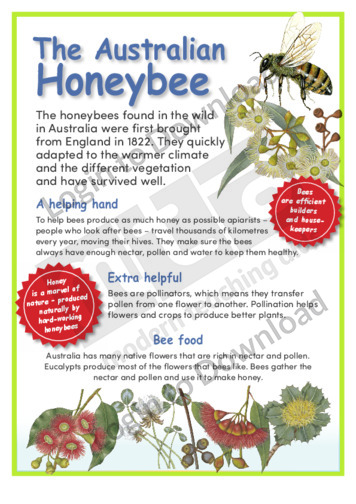This article, ‘A Snake’s Life’ provides information about the life cycle of a snake as well as various physical characteristics. It also introduces students to various terms relating to the snake’s physical features. The text is supported by colourful and engaging photographs.
This Readers Theatre activity, ‘All About Bats’ encourages students to summarise and paraphrase information in texts. It also builds reading fluency. This activity includes a script for 5 readers.
This Readers Theatre activity, ‘All About Oceans’ encourages students to use prior knowledge and experience to comprehend and respond to new information found in text. It also builds reading fluency. This activity includes a script for 7 readers.
This article, ‘Annoying Insects’ provides information about the physical characteristics, habits, habitat, diet and life cycle of the Australian bush fly. It also introduces students to various terms relating to the fly’s habits and life cycle.
This article, ‘Attack and Defence’ provides information about six different methods used by snakes to avoid danger or to catch prey (ambush, camouflage, threat display, active hunting, decoy, playing dead). It also describes habits, habitat and diet and introduces students to various terms relating to snakes’ habits. The text is supported by colourful and engaging …More
This article, ‘Australia’s Most Venomous Snakes’ provides information about six species of venomous snakes found in Australia, their physical characteristics, habits and habitat and their venomous ‘rating’. It also introduces students to various terms relating to venomous snakes’ danger level. The text is supported by colourful and engaging photographs.
This article, ‘Beavers’ is a factual report about the appearance, habitat, and behaviours of beavers. It provides opportunities for students to practise vocabulary and comprehension skills. Answer sheet provided with file download.
This article, ‘Big Eaters’ provides information about the physical features of snakes that allows some of them to eat large prey, their varied diets, hunting methods and jaw structure. It also introduces students to various terms relating to snakes’ physical features and habits. The text is supported by colourful and engaging photographs.
This article, ‘Blacktip Reef Shark’, provides information about the physical characteristics, behaviour, habitat, diet and life cycle of this shark. A quick reference fact file includes scientific name and IUCN status. The text is accompanied by a large illustration of the shark.
This article, ‘Blind Shark’, provides information about the physical characteristics, behaviour, habitat, diet and life cycle of this shark. A quick reference fact file includes scientific name and IUCN status. The text is accompanied by a large illustration of the shark.
This article, ‘Bronze Whaler’, provides information about the physical characteristics, behaviour, habitat, diet and life cycle of this shark. A quick reference fact file includes scientific name and IUCN status. The text is accompanied by a large illustration of the shark.
This article, ‘Bull Shark’, provides information about the physical characteristics, behaviour, habitat, diet and life cycle of this shark. A quick reference fact file includes scientific name and IUCN status. The text is accompanied by a large illustration of the shark.
This article, ‘Burrowing Mammals’ provides information about the physical characteristics, habits, habitat and life cycle of the bilby and the spinifex hopping mouse. It also introduces students to various terms relating to the animals’ physical features. The text is supported by colourful and engaging photographs.
This article, ‘Busy Bee’, provides information about how bees gather nectar. It explains the co-operation between the bees in the hive and how they communicate. The text is supported by illustrations.
This Readers Theatre activity, ‘Cool Cow Facts’ encourages students to summarise and paraphrase information in texts. It also builds reading fluency. This activity includes a script for 6 readers.
This graphic organiser, ‘Cycles’ helps students to record valuable information from an experiment or display.
This graphic organiser, ‘Cycles Comic Strip’ helps students to record valuable information from their experiments or displays.
This article, ‘Dugong’ provides information about the physical characteristics, habits, habitat and diet of the dugong and, briefly, the manatee. It also introduces students to various terms relating to the dugong’s physical features and habitat. The text is supported by colourful and engaging photographs.
This article, ‘Echidna’ provides information about the physical characteristics, habits, habitat and life cycle of the echidna. It also introduces students to various terms relating to the echidna’s physical features. The text is supported by colourful and engaging photographs and illustrations.
This graphic organiser, ‘Ecosystem Web’ helps students to connect relationships between organisms in a useful way.
This article, ‘Elephant Seal’ provides information about the physical characteristics, habits, habitat, life cycle and special abilities of the elephant seal. It also introduces students to various terms relating to the elephant seal’s physical features and habitat. The text is supported by colourful and engaging photographs.
This article, ‘Extreme Serpents’ provides information about four species of snakes including their physical characteristics, habits, habitat, diet and hunting methods. It also introduces students to various terms relating to the snakes’ physical features and habits. The text is supported by colourful and engaging photographs.
This article, ‘Fabulous Frogs’ provides information about five species of frogs including their physical characteristics, habitat, life cycle and special abilities. It also introduces students to various terms relating to the frogs’ physical features. The text is supported by colourful and engaging photographs.
This article, ‘Flying Mammals’ provides information about the physical characteristics, habits, habitat and diet of three species of bat. It also introduces students to various terms relating to the bats’ physical features. The text is supported by colourful and engaging photographs.
This sequencing activity, ‘ Frog Life Cycle’ develops comprehension through sequencing images about a frog’s life cycle from egg to adult.
This Readers Theatre activity, ‘Frogs’ encourages students to summarise and paraphrase information in texts. It also builds reading fluency. This activity includes a script for 6 readers.
This article, ‘Hive of Activity’, provides information about the internal structure of man-made beehives. It describes the purpose of the various sections and describes how the bees use them. The text is supported by detailed illustrations.
This life science worksheet, ‘How Long Do Animals Live?’ supports students to research and record on a timeline the number of years a variety of animals live. It supports an understanding of animals.
This article, ‘How Snakes Move’ provides information about the ways in which different snakes move depending on their environment or their own physical features. It also introduces students to various terms relating to snakes’ physical features and movements. The text is supported by detailed diagrams and several photographs.
This Readers Theatre activity, ‘Learn About Ducks’ encourages students to summarise and paraphrase information in texts. It also builds reading fluency. This activity includes a script for 5 readers.
This article, ‘All About Insects: The Life Cycle of a Butterfly’, describes the different stages of a butterfly’s life. It provides factual information about each phase of a butterfly’s life and includes colourful and engaging images.
This graphic organiser, ‘Life Cycles’ supports the teaching of science and writing by giving students a template for creating a life cycle diagram.
This sequencing activity, ‘Metamorphosis’ develops comprehension through sequencing images about the process of metamorphosis of a butterfly.
This article, ‘Oceanic Whitetip’, provides information about the physical characteristics, behaviour, habitat, diet and life cycle of this shark. A quick reference fact file includes scientific name and IUCN status. The text is accompanied by a large illustration of the shark.
This article, ‘Palm Cockatoo’ provides information about the physical characteristics, habits, habitat, diet and some special abilities of the palm cockatoo. It also introduces students to various terms relating to the palm cockatoo’s physical features and its food. The text is supported by colourful and engaging photographs.
This Readers Theatre activity, ‘Plant Life’ encourages students to summarise and paraphrase information in texts. It also builds reading fluency. This activity includes a script for 4 readers.
This article, ‘Platypus’, provides information about the physical characteristics, habits, habitat and life cycle of the platypus. It also introduces students to various terms relating to the platypus’s physical features. The text is supported by colourful and engaging photographs and illustrations.
This article, ‘Port Jackson Shark’, provides information about the physical characteristics, behaviour, habitat, diet and life cycle of this shark. A quick reference fact file includes scientific name and IUCN status. The text is accompanied by a large illustration of the shark.
This reading comprehension activity, ‘Possums’ asks students to answer questions about possums. It is aimed at increasing students’ awareness of semantics and encourages students to recall information and think about word meanings and author purpose.
This article, ‘Prehistoric Creatures’ provides information about two species of crocodiles including their physical characteristics, habits, habitat, hunting methods and special abilities. It also introduces students to various terms relating to the crocodiles’ physical features and habitat. The text is supported by colourful and engaging photographs.
This article, ‘Pygmy Shark’, provides information about the physical characteristics, behaviour, habitat, diet and life cycle of this shark. A quick reference fact file includes scientific name and IUCN status. The text is accompanied by a large illustration of the shark.
This article, ‘Pythons’ provides information about the two species of python as well as general information about pythons’ physical characteristics, habits, habitat and life cycle. It also introduces students to various terms relating to pythons’ hunting habits. The text, includes a brief ‘fact file’ of statistics and is supported by several photographs.
This article, ‘Red-bellied Black Snake’ provides information about the identifying features and other physical characteristics of the red-bellied black snake as well as its adaptability and its habits, habitat and diet. It also introduces students to various terms relating to the snake’s features. The text includes a brief ‘fact file’ of statistics and is supported …More
This article, ‘Satin Bowerbird’ provides information about the physical characteristics, habitat, habits and special abilities of the satin bowerbird. It also introduces students to various terms relating to the satin bowerbird’s special abilities. The text is supported by colourful and engaging photographs.
This Readers Theatre activity, ‘ Saving the Red-Eyed Tree Frog’ encourages students understanding the main idea and to find supporting details in the text. It also builds reading fluency. This activity includes a script for 5 readers.
This article, ‘Scary Lizards’ provides information about two species of Australian lizards including their physical characteristics, habitats and defence habits. It also introduces students to various terms relating to the lizards’ physical features and habitat. The text is supported by colourful and engaging photographs.
This article, ‘Sea Turtles’ describes the habitat, features and behaviour of turtles that live in the sea. It provides opportunities for students to practise vocabulary and comprehension skills. Answer sheet provided with file download.
This article, ‘Sea-Snakes’ provides information about the physical characteristics, habits, and diet of seven species of sea-snakes. It also introduces students to various terms relating to snakes that live in water. The text is supported by a large illustration that shows all species described.
This sequencing activity, ‘Seeds on the Move’ develops comprehension through sequencing images about how seeds are spread.
This sequencing activity, ‘Seeds to Fruit’ develops comprehension through sequencing images about a plant’s life cycle from seed to fruit.
This article, ‘Snake Quick Facts’ provides information about the physical characteristics of snakes with particular detail of the head and mouth. It introduces students to several terms relating to a snake’s physical features. The text is supported by a large diagram and several photographs.
This article, ‘Snake Snippets’ provides a variety of information about snakes of different species. It highlights unusual characteristics and provides examples of interesting species. The text is supported by colourful and engaging photographs.
This article, ‘Snakebite Safety’ provides information about the nature of snake venom, what antivenom is, snakes’ relationship with people, how to avoid snakebite and first aid if bitten. It also introduces students to various terms relating to snakebites. The text is supported by colourful and engaging photographs.
This article, ‘Southern Cassowary’ provides information about the physical characteristics, habits, habitat, diet and life cycle of the southern cassowary. It also introduces students to various terms relating to the cassowary’s physical features and habitat. The text is supported by colourful and engaging photographs.
This article, ‘Strange Sea Creatures’ provides information about four species of marine creatures including their physical characteristics, habits, habitat, camouflage ability and hunting methods. It also introduces students to various terms relating to the creatures’ physical features. The text is supported by colourful and engaging photographs.
This article, ‘Superb Lyrebird’ provides information about the physical characteristics, habits, habitat and special abilities of the superb lyrebird. It also introduces students to various terms relating to the lyrebird’s physical features and habits. The text is supported by colourful and engaging photographs.
This article, ‘Tasmanian Devil’ provides information about the physical characteristics, habits, habitat and diet of the Tasmanian devil. It also introduces students to various terms relating to the echidna’s physical features. The text is supported by colourful and engaging photographs.
This Readers Theatre activity, ‘The Alaskan Wilderness’ encourages students to summarise and paraphrase information given in the text. It also builds reading fluency. This activity includes a script for 7 readers.
This article, ‘The Australian Honeybee’, provides information about the behaviour, habitat and life cycle of the honeybee. It focuses on the bee’s close association with its habitat. The text is supported by several illustrations.
It�s that easy!

